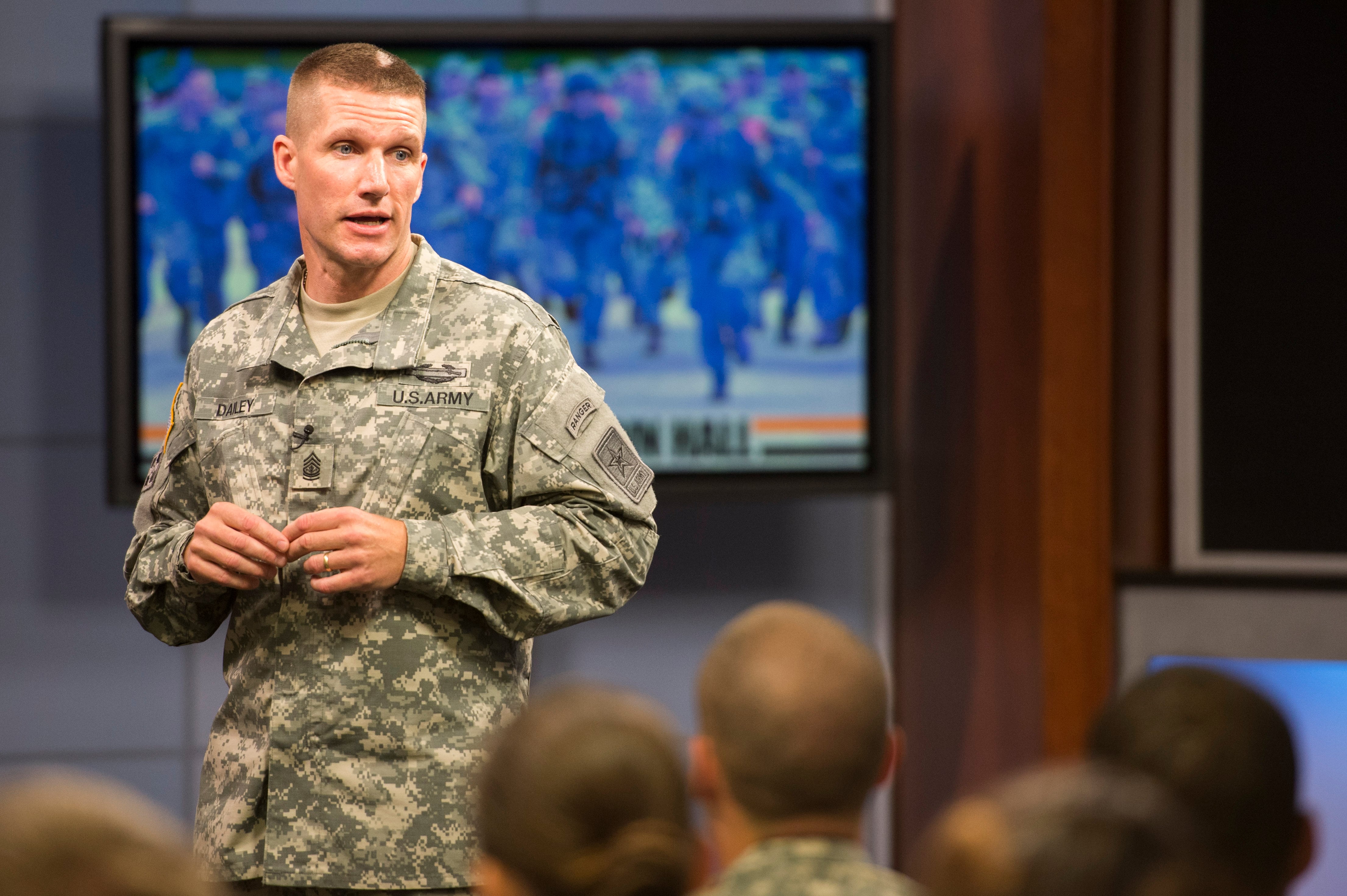Sergeant Major of the Army Dan Dailey is extending until Aug. 31 a soldier survey on several proposed uniform changes — including bringing back the iconic Eisenhower jacket, gender-neutral headgear, and black socks with the PT uniform.
The survey, which was sent to a random sampling of about 120,000 soldiers in mid-July, received more than 12,000 responses.
The majority of soldiers supported every proposed change, but Dailey wants more feedback before making any recommendations to senior Army leaders, according to information from his office.
The 12,000 responses make up a good sample size, but Dailey "wants to be sure it's what most soldiers want before moving forward," according to his office.
To get that additional feedback, all 120,000 soldiers will receive the survey again via email. Those who have not weighed in yet will have until Aug. 31 to do so. Soldiers won't be able to vote twice.
No new sample group will be chosen, according to SMA's office.
So far, soldiers from all components and cohorts — enlisted, officer and warrant — have responded to the survey, according to Dailey's office.
"We want to make sure soldiers get a chance to express their opinion," Dailey said when the survey was first launched. "It was very important to the [Army chief of staff] and myself for soldiers to know we're listening to them."
Dailey also is looking at how these changes also could boost morale across the force.
"If you can raise motivation by fixing things that don't really have a negative effect on the standards and discipline of the Army, why not?" Dailey said.
A closer look:
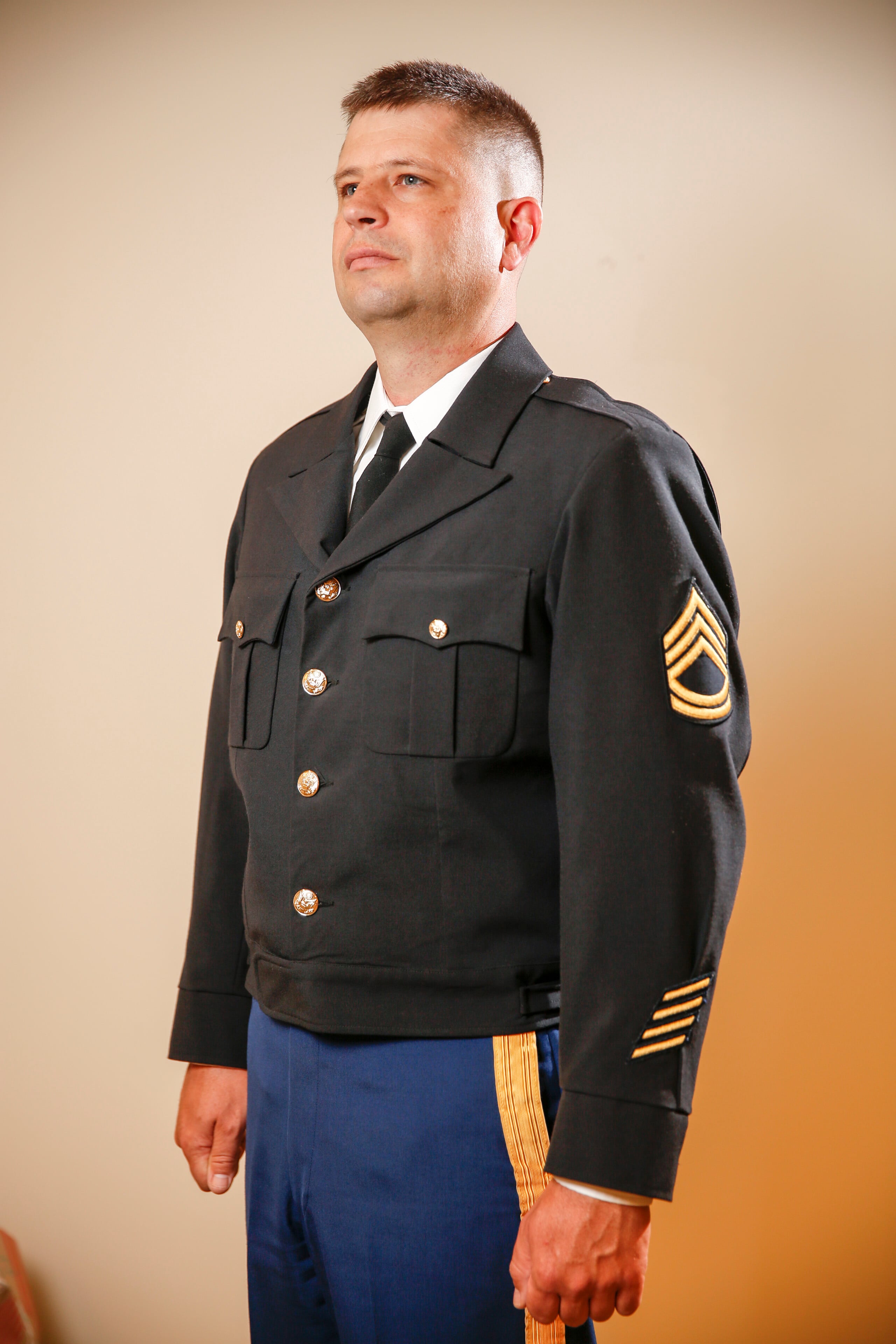
The Army is considering the optional wear of a blue jacket inspired by the iconic Eisenhower jacket.
Photo Credit: Mike Morones/Staff
Eisenhower jacket
Vote results: 63 percent (7,560 soldiers) voted yes; 37 percent (4,483 soldiers) voted no.
The original "Eisenhower" or "Ike jacket" was patterned after the British battle jacket. The waist-length jacket was made popular by Gen. Dwight Eisenhower during World War II.
This new version, which already has a prototype, is a wind-proof blue jacket meant to be worn in a workplace setting.
The proposed jacket would "add one layer of etiquette" for soldiers who may need to go from the Class Bs to a more formal appearance without transitioning to the full Army Service Uniform jacket, Dailey said.
If the jacket is approved, it would be an optional item.
If soldiers like the Eisenhower jacket, it will have to go through the usual Army process for getting uniform items approved.
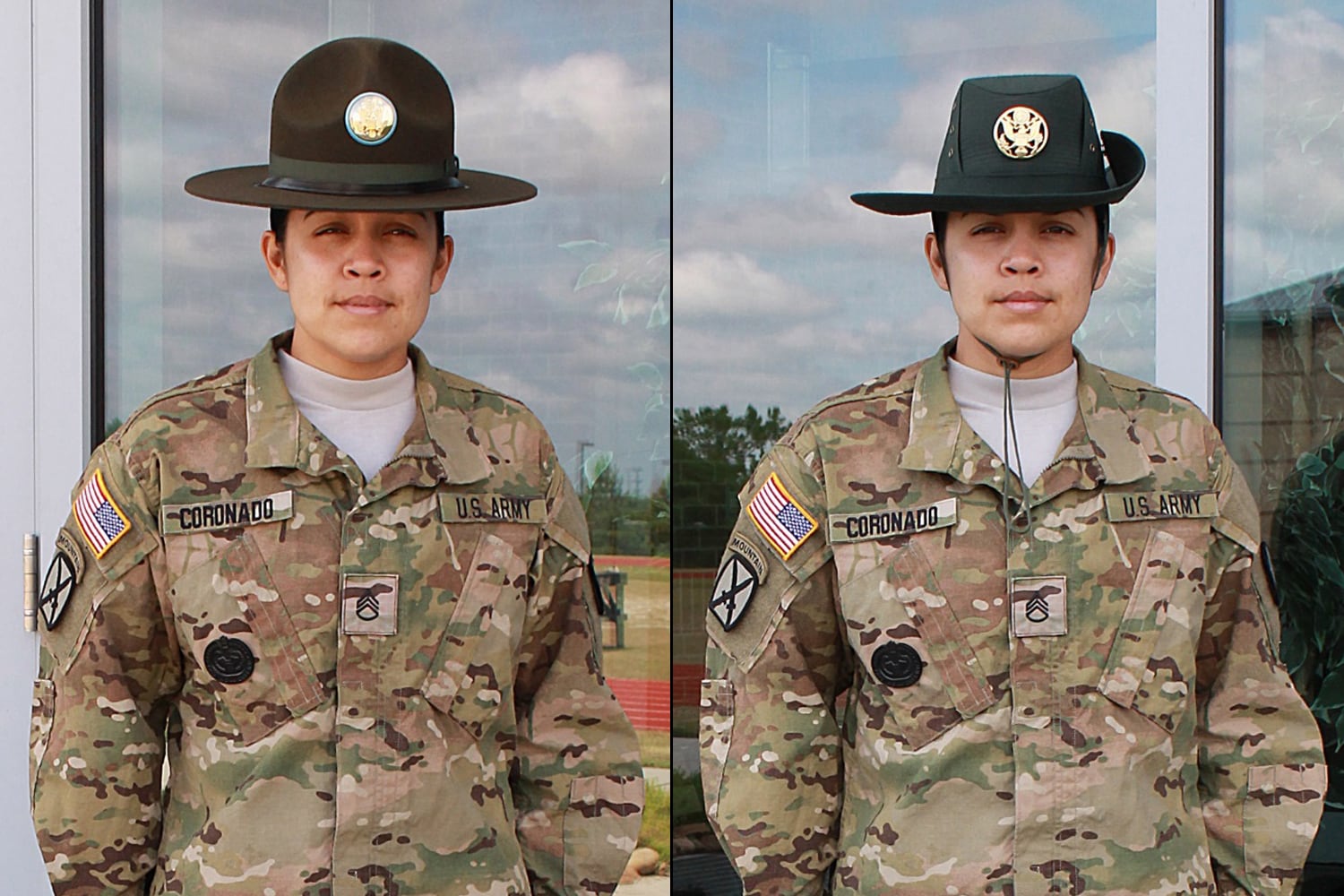
The Army is considering ditching the female drill sergeant hat. Women and men could both wear the same "Smokey" hat instead.
Photo Credit: Army
Drill sergeant hats
Voting results: 63 percent (7,547 soldiers) voted yes; 37 percent (4,500 soldiers) voted no.
Based on feedback from female drill sergeants, Army leaders want to know if soldiers support a single campaign hat for both male and female drill sergeants.
Male and female drill sergeants now have their own distinct hats.
The current male drill sergeant hat evolved from the 1883 campaign hat, according to the Army.
The female drill sergeant hat came into being in 1972. It was designed by Brig. Gen. Mildred Bailey, according to the Army.
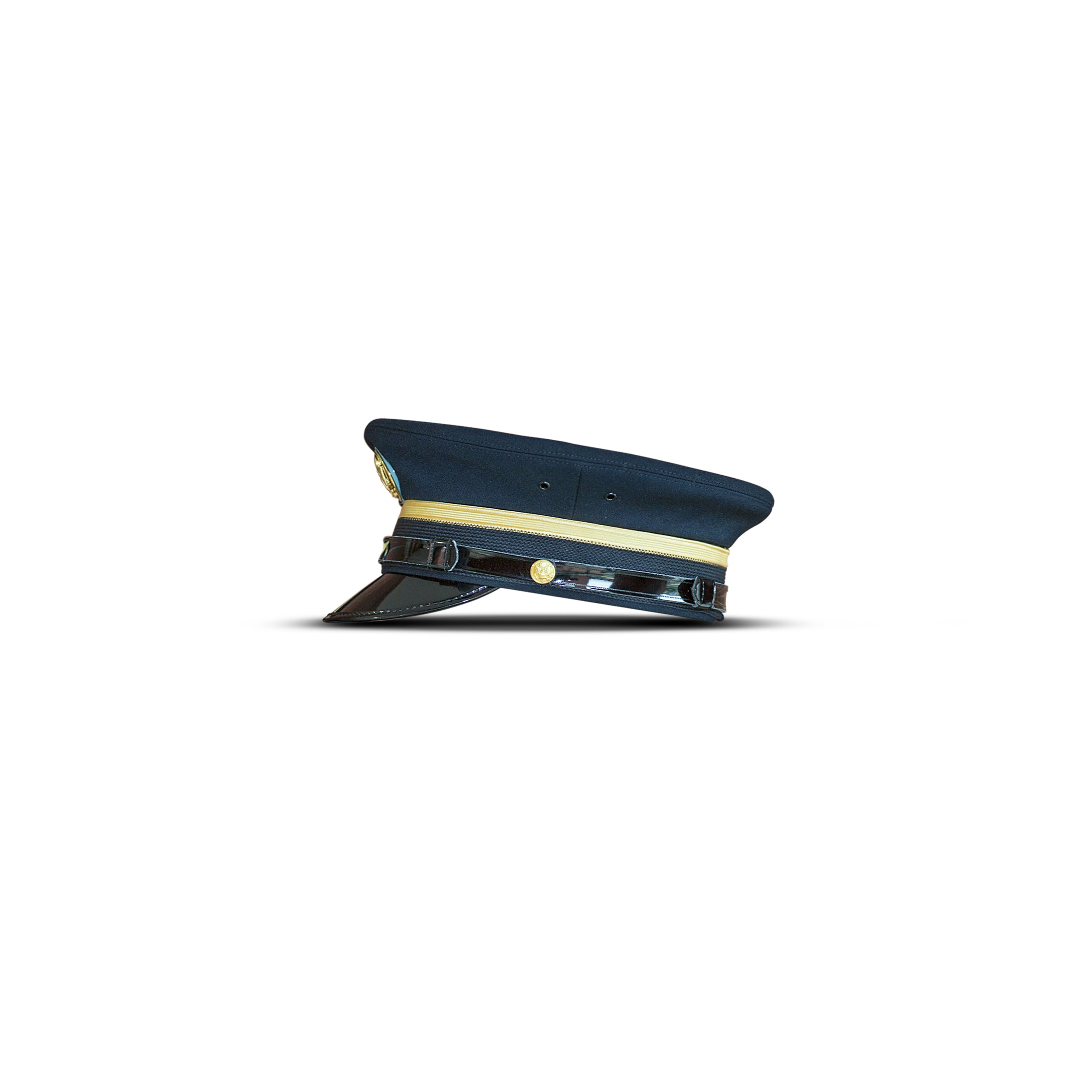
Should the "bus driver cap" be worn by both men and women? A majority of soldiers surveyed believe so.
Photo Credit: Army
Blue service caps
Voting results: 67 percent (8,021 soldiers) voted yes; 33 percent (4,007 soldiers) voted no.
Also known as "the bus driver cap," the Army wants to know if there should be a single cap for both male and female soldiers to wear with the Army Service Uniform.
This question also stems from feedback that senior enlisted leaders have received from female soldiers.
Service cap vs. beret
Voting results: 56 percent (6,743 soldiers) voted yes; 44 percent (5,336 soldiers) voted no.
Army leaders want to know if the blue service cap should be the required headgear for senior noncommissioned officers and higher while wearing the Army Service Uniform.
This change, if soldiers like it, would affect sergeants first class through sergeants major, warrant officers and officers.
AR 670-1 currently calls for the service cap to be optional for corporals and above. The beret is the primary headgear worn with the service uniform by all soldiers unless directed by the commander, according to the regulation.
Just like junior enlisted soldiers in their ASUs wear blue trousers while sergeants wear blue trousers with a gold braid, switching to the service cap marks a transition in a soldier's career, officials said.
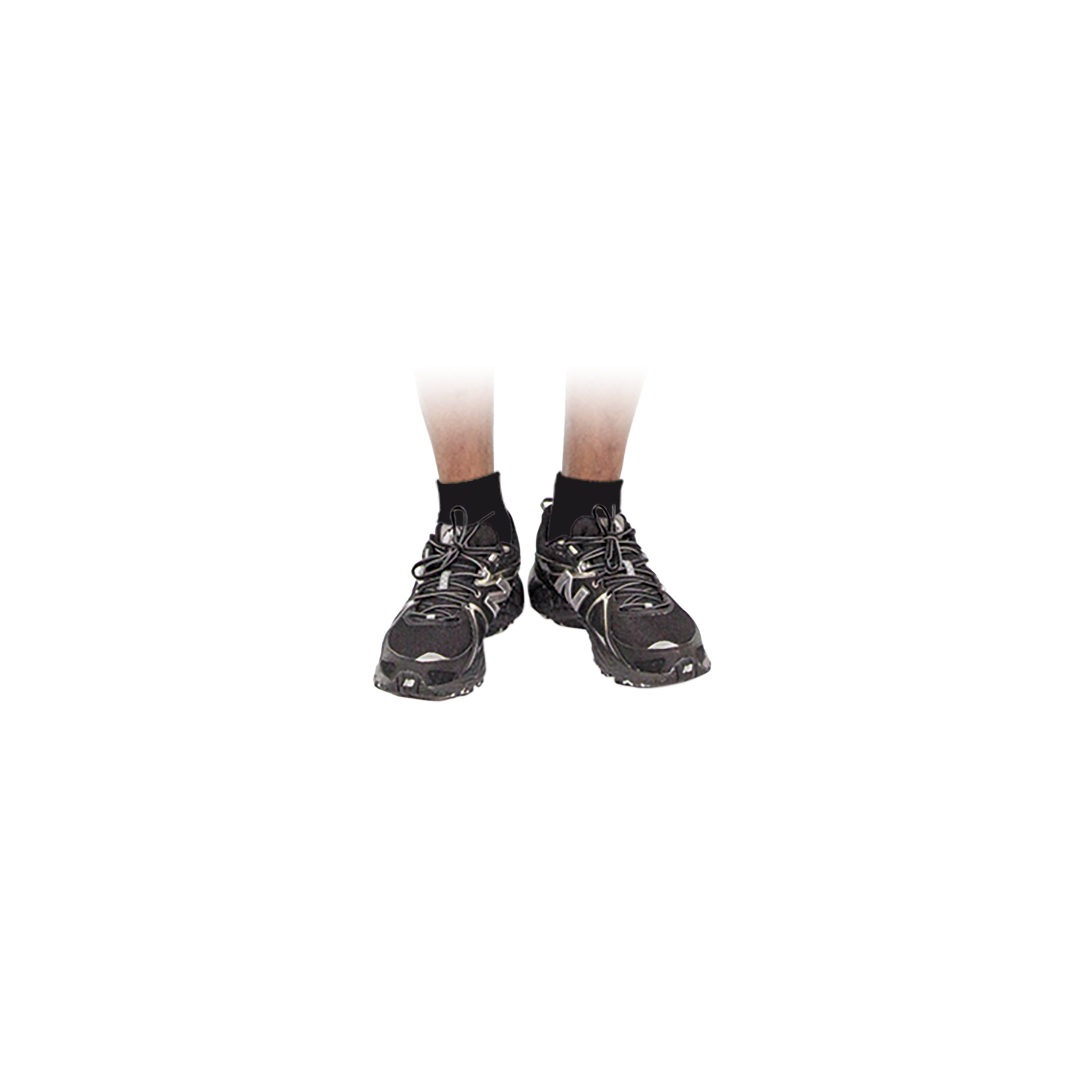
Black socks could be given the OK for wear with the Army Physical Fitness Uniform.
Photo Credit: Army
Black socks
Voting results: 67 percent (8,032 soldiers) voted yes; 33 percent (4,018 soldiers) voted no.
The survey asks soldiers if they should be allowed to wear black socks with the new Army Physical Fitness Uniform, which is black.
The idea for black socks came up at several town hall meetings Dailey conducted with soldiers.
It's a topic Dailey himself brought up, based on soldier feedback he had received, during a June 4 town hall meeting at Fort Meade, Maryland. Most of the 100-plus soldiers there liked the idea.
The sock question is included in the survey to "make sure this is the majority and not just a small contingent" of soldiers who like the idea, Dailey said.
Socks worn during PT should be calf- or ankle-length and plain white with no logos, according to the current Army Regulation 670-1. The socks also must cover the entire ankle bone.
Michelle Tan is the editor of Army Times and Air Force Times. She has covered the military for Military Times since 2005, and has embedded with U.S. troops in Iraq, Afghanistan, Kuwait, Haiti, Gabon and the Horn of Africa.
